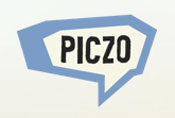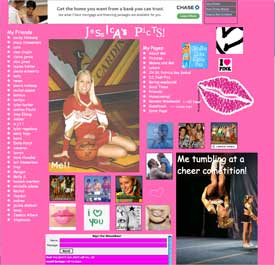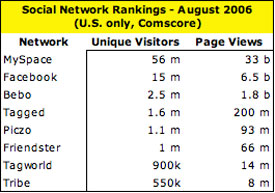 San Francisco based Piczo is having a media coming-out party today, with announcements on the current state of the service and key statistics. A few weeks ago CEO Jeremy Verba did the same thing in the UK – which we covered on TechCrunch UK.
San Francisco based Piczo is having a media coming-out party today, with announcements on the current state of the service and key statistics. A few weeks ago CEO Jeremy Verba did the same thing in the UK – which we covered on TechCrunch UK.
Piczo is adding 35,000 new member registrations per day, 75% of which are teenagers between 13 and 16 years old. Ten million unique visitors come to Piczo sites monthly, adding up to 2.5 billion page views. While this isn’t much compared to monster competitor MySpace (which serves over 1 billion pages per day), it shows what the power of the network effect can do when applied properly – Piczo hasn’t spent a dime on marketing.
 And unlike Myspace, Piczo is focused on safety first. It is virtually impossible to browse user pages on Piczo. There is no search or browse feature. Users must share their page URL with others for it to be found, and there are numerous ways for users, parents and others to report inappropriate behavior. Piczo has full time staff reviewing all complaints and takes swift action to protect its members.
And unlike Myspace, Piczo is focused on safety first. It is virtually impossible to browse user pages on Piczo. There is no search or browse feature. Users must share their page URL with others for it to be found, and there are numerous ways for users, parents and others to report inappropriate behavior. Piczo has full time staff reviewing all complaints and takes swift action to protect its members.
Piczo was founded in early 2004 as a paid service. Based on early user feedback it was relaunched as a free service, and founder Jim Conning sent out 100 emails to Canadian teenagers announcing the new site. That is where Piczo’s marketing efforts began and, until now, ended. The result of those 100 emails has been a massive viral spread of the product.
Piczo brought in a high powered CEO late last year, Jeremy Verba. Verba was previously GM and Vice President of AOL’s Voice Services division, which he grew to over a million subscribers. In addition, he was co-founder and president of E!Online, a joint venture of CNET and E!Entertainment Television, now a part of Comcast. Piczo is well funded after pocketing a total of US$7 million over two rounds of financing from Sierra Ventures and Catamount in 2005 and 2006.
The Social Networking Space
I thought this was a good opportunity to look up Comscore numbers on the largest social networking players and see how things are evolving (these are U.S. numbers only). MySpace is still the king, with over a billion page views per day, 100 million registered users and 56 million unique visitors per month. If anything, their lead is growing over competitors.
 But that doesn’t mean there won’t be other winners in this space, too. Facebook continues to dominate the college and high school markets, and their recent decision to open themselves up to anyone will almost certainly increase their userbase and page views. Bebo, Tagged, Piczo, Friendster, Tagworld and Tribe all also show very nice growth rates, with little or no marketing spends.
But that doesn’t mean there won’t be other winners in this space, too. Facebook continues to dominate the college and high school markets, and their recent decision to open themselves up to anyone will almost certainly increase their userbase and page views. Bebo, Tagged, Piczo, Friendster, Tagworld and Tribe all also show very nice growth rates, with little or no marketing spends.
There’s still room to grow internationally as well. Bebo and Piczo both have a strong presence in the UK in particular. Of course, the argument that these companies will be successful in non-English speaking countries v. local competitors isn’t nearly as certain. We expect consolidation to occur in the next 12 months, and the largest independents (Facebook, Bebo, etc.) to be acquired by the big guys (Yahoo, Microsoft and Viacom in particular seem to be actively looking).